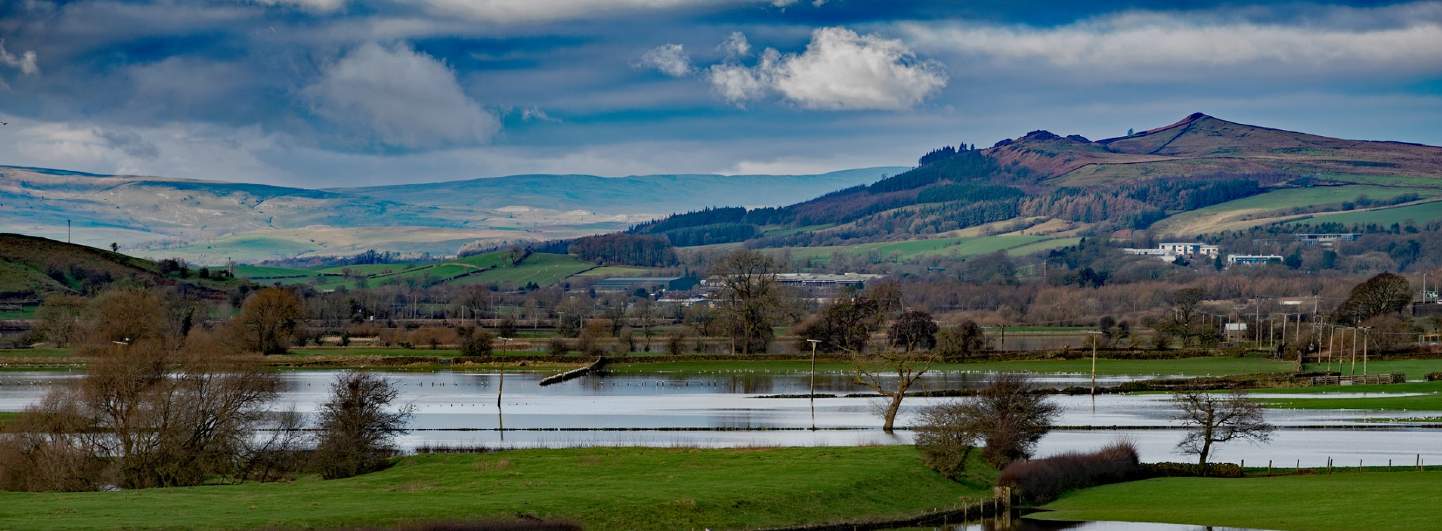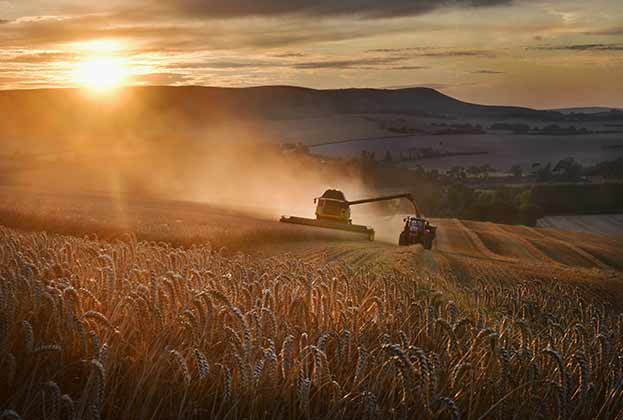Record-breaking rain over the winter and well into the spring has had a profound effect on the farming community – threatening farmers’ ability to successfully drill and establish essential food crops in challenging conditions.
The Met Office reported that over 1,695mm of rain fell in the 18 months to March 2024 – the highest level recorded since records began in 1836. For some farm businesses, this could spell the first summer without a harvest since the Second World War.
Over the winter we saw whole fields submerged for long periods, followed by waterlogged soils effectively drowning and rotting crops. As so many winter crops failed, or were never drilled, the pressure was on for a switch to spring drilling and establishing crops in challenging seedbeds. The normal spring drilling window was not achievable for many farmers as fields lay wet, coupled with limited periods of dry weather restricting opportunities to create suitable seedbeds.
Livestock farmers have also been impacted, with limited access to areas of grazing where pasture was flooded and waterlogged, with reserves of silage and straw exhausted. Many farmers have seen their costs increase by having to purchase additional feed for their animals, given the longer than anticipated winter period.
In addition, livestock farmers have been unable to spread slurries and manures onto waterlogged soils this spring, pushing winter storage facilities to their limit.
Crop losses from flooding and waterlogged soils are generally uninsurable, and as such, there is a considerable need for financial support.
Five considerations for farmers and landowners to help mitigate both the short-term consequences of the recent flooding and the long-term management techniques that could be incorporated into farm planning are outlined below:
Funding
Financial support in the form of the Flood Recovery Fund was announced by the government on 9 April, offering grants of up to £25,000 to farmers and landowners for land that lies within 150 metres of the named water courses most affected by Storm Henk.
Farming minister Mark Spencer has since removed the 150 metre limit on farmers qualifying for this support in consideration of the scale of the devastation seen throughout the winter and the vast number of farmers facing devastating losses.
For further details on making a crop compensation claim please see here.
Farm planning
Farm businesses need to incorporate measures to allow for loss from significant weather events, which are becoming more and more frequent. There is also a need to become more resilient and flexible in their approach.
Farmers are advised to check the flood risk of their land and create a flood emergency plan to ensure they can take actions to prevent damage to property, livestock, machinery and deadstock, including animal feed and chemicals such as plant protection products and fertilisers.
Crop rotations, winter cover cropping and drilling periods will have to be carefully considered to reduce the loss of income, whilst also helping to minimise the risk of flooding on agricultural land. The use of crops with a later drilling period may be incorporated into rotations to extend the window of drilling when required.
Management of land
Good maintenance of existing drains, ditches and outfalls is a good place to start.
There are also methods of management which involve hard engineering that could help protect land from flooding, for example installing and maintaining field drainage, ditches and creating run off ponds. Field drainage can reduce flood risk by increasing storm-water storage in soils and decrease soil erosion and saturation risks. Based on 2024 prices, it can be costly at £2,500-£3,500/hectare and is considered a long-term investment with a 20-year useful life. There is potential funding from government schemes for flood management options here.
Natural flood management techniques can also be adopted which can successfully store and slow the flow of water through a catchment, whilst also potentially increase biodiversity, soil health and can often be funded through available grants. Successful examples include increased woodland creation and wetland establishment in strategic areas.
Alternative land uses
With the increased uncertainty and extreme weather events, many farmers could be turning to alternative land uses offering a more secure income stream to land vulnerable to flooding and waterlogging. Land uses such as renewable energy generation, or the Sustainable Farming Incentive could offer more certainty of income and less risk for farmers concerned with the increasing unreliability of the weather.
New technologies
The development of future technologies needs to consider increasing resilience to the higher levels of rainfall across all areas of agriculture. An example of this is the need to monitor tyre pressure on tractors to reduce the soil compaction, which can further exacerbate waterlogging of the land.
Ongoing research with the CGIAR into flood resistant crops which are able to adapt to the UK’s climate, whilst maintaining high yields, are being explored, and could offer a solution.
The above considerations indicate ways in which farmers and landowners can begin to adapt their enterprises and circumstances to cope with the more extreme weather conditions which the country is facing.
Sensible business planning will be essential to minimise future losses in the industry, especially as we look ahead to a harvest where the full consequences of the excessive autumn and winter rainfall will be realised.
Further information
Contact Lucy Rowton-Lee or Nick Pain

.jpg)
.jpg)
.jpg)

.jpg)


.jpg)

